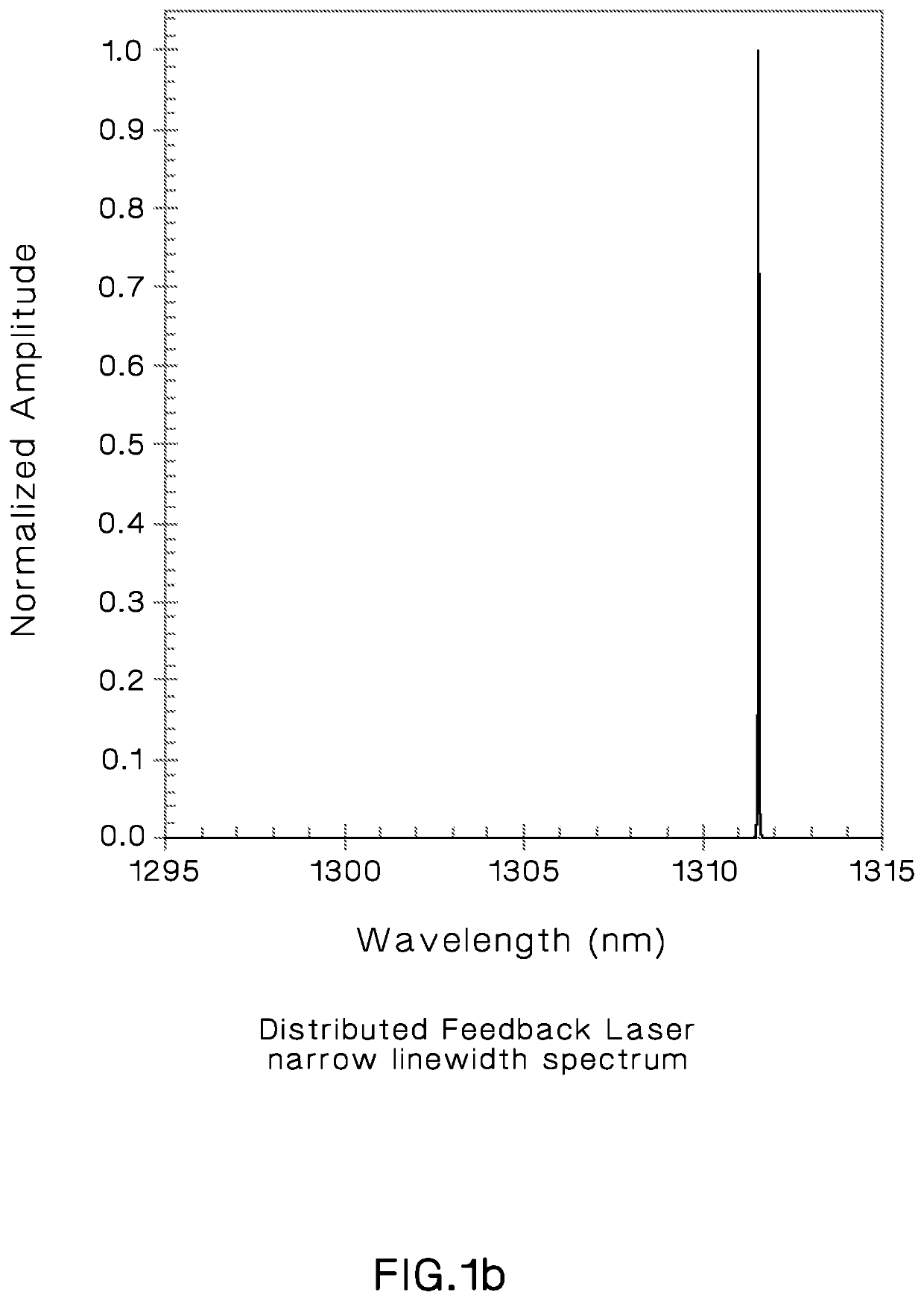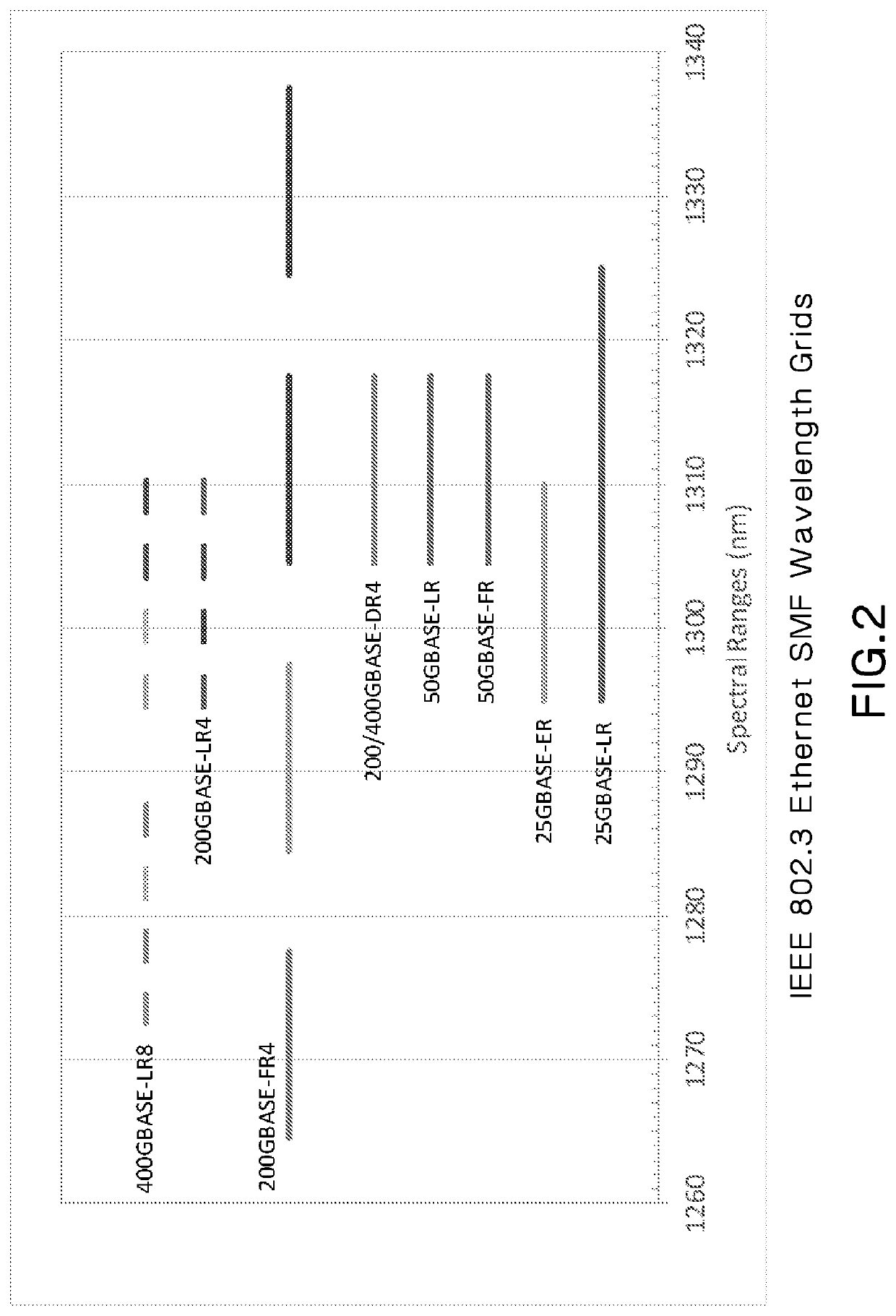Single-mode optical fiber having negative chromatic dispersion
a single-mode optical fiber and negative chromatic dispersion technology, applied in the field of single-mode optical fibers, can solve the problems of increasing the chromatic dispersion penalty of the channel, requiring equipment-intensive grating fabrication and overgrowth deposition steps, and significant large chromatic dispersion penalties, so as to reduce the chromatic dispersion, reduce the multi-path interference (mpi), and increase the power margin
- Summary
- Abstract
- Description
- Claims
- Application Information
AI Technical Summary
Benefits of technology
Problems solved by technology
Method used
Image
Examples
Embodiment Construction
[0019]An optical fiber in accordance to the present invention has a zero-dispersion wavelength shifted to a longer wavelength compared to industry Standards unshifted single-mode fiber Types IT U-G.652, and / or IT U-G.657, where the ZDW is specified to be between 1302 nm and 1322 nm. A fiber compliant with the present invention has a ZDW greater than 1334 rnm, so that essentially all transmitted operating wavelengths in the 1310 nm window undergo a negative chromatic dispersion when propagating through said optical SMF channel. A negative dispersion compensates for the chromatic dispersion due to laser chirp, thereby reducing the signal pulse-width and hence, the dispersion penalty of the channel.
[0020]In FIG. 2, we plot the spectral grids and wavelength ranges for 8 SMF laser transceiver options specified in IEEE 802.3 Ethernet Standards for data rates ranging from 25 Gb / s to 400 Gb / s. Transceivers can include 1, 4, or 8 discrete signal wavelengths. For these Ethernet specified tran...
PUM
| Property | Measurement | Unit |
|---|---|---|
| cable cutoff wavelength | aaaaa | aaaaa |
| zero-dispersion wavelength | aaaaa | aaaaa |
| mode field diameter | aaaaa | aaaaa |
Abstract
Description
Claims
Application Information
 Login to View More
Login to View More - R&D
- Intellectual Property
- Life Sciences
- Materials
- Tech Scout
- Unparalleled Data Quality
- Higher Quality Content
- 60% Fewer Hallucinations
Browse by: Latest US Patents, China's latest patents, Technical Efficacy Thesaurus, Application Domain, Technology Topic, Popular Technical Reports.
© 2025 PatSnap. All rights reserved.Legal|Privacy policy|Modern Slavery Act Transparency Statement|Sitemap|About US| Contact US: help@patsnap.com



